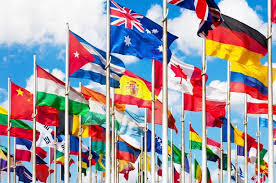15 Keys to Emotionally Intelligent Communication & Stronger Relationships

Updated at: 2025-03-02 13:13:39 (2 months ago by Melkisedeck Leon Shine)
Mastering Emotional Intelligence: The Key to Stronger Relationships
Effective communication forms the bedrock of any thriving relationship, whether personal or professional. However, the words we choose are only half the equation; successfully navigating interactions hinges on adept emotional management. Our feelings profoundly influence the trajectory of conversations, making emotional intelligence a crucial skill to cultivate.
This article delves into fifteen actionable strategies designed to enhance your emotional intelligence and transform your communication for significantly improved relationships.
15 Strategies for Emotionally Intelligent Communication
1. Cultivate Self-Awareness: Begin by recognizing and understanding your own emotional landscape. Pause before engaging in a discussion to identify and assess your current emotional state.
2. Practice Active Listening: Give your undivided attention to the speaker. Actively listen by focusing intently on their verbal message, body language, and tone of voice. This fosters deeper understanding of their emotional experience.
3. Validate Emotions: When someone shares their feelings, acknowledge and validate their experience. Demonstrate empathy by showing that you understand their perspective and emotional state.
4. Avoid Judgment: Refrain from making judgments or criticizing others' emotional responses. Recognize that individual experiences and reactions are unique and varied.
5. Utilize "I" Statements: When expressing your own feelings, employ "I" statements rather than accusatory or blaming language. This prevents conversations from escalating into unproductive conflicts.
6. Take a Strategic Pause: If overwhelmed by emotions, step away from the conversation. Give yourself the time and space necessary to regain composure before resuming the discussion.
7. Focus on Collaborative Solutions: Instead of dwelling on negativity, redirect the conversation towards identifying and implementing solutions. This promotes a constructive and productive dialogue.
8. Practice Patience and Mindfulness: Emotions can escalate rapidly, potentially leading to heated exchanges. Practice patience, avoid impulsive reactions, and respond thoughtfully by taking a deep breath and composing your thoughts.
9. Employ Humor Judiciously: Humor can be a powerful tool for diffusing tension. However, use caution to ensure your humor is appropriate and doesn't diminish or invalidate others' feelings.
10. Decipher Nonverbal Cues: Pay close attention to nonverbal communication, such as facial expressions and body language. These often provide invaluable insight into another person's emotional state, enabling you to respond appropriately.
11. Prevent Escalation: If you sense the conversation veering towards negativity, actively de-escalate. Instead of reacting defensively, steer the discussion back towards a calmer, more rational exchange.
12. Seek Clarity: When uncertain about someone's emotions or intentions, don't hesitate to ask clarifying questions. This prevents misunderstandings and avoids potential misinterpretations.
13. Hone Emotional Intelligence: Emotional intelligence is the cornerstone of effective communication. Continuously refine this skill by practicing self-awareness, empathy, and effective communication techniques.
14. Choose the Optimal Time: The timing of a conversation significantly influences its outcome. Select a moment when all parties are calm and receptive to a discussion of emotions or sensitive topics.
15. Seek Professional Guidance When Needed: If you consistently struggle to manage emotions during communication, consider seeking professional support. Therapists or relationship counselors can provide valuable guidance and tools for developing effective emotional management skills.
In essence, mastering emotional intelligence in communication is paramount for building and maintaining strong relationships. By cultivating self-awareness, active listening, empathy, and effective communication techniques, we create an environment of understanding and mutual respect. It's not merely what we say, but how we manage our emotional responses that truly defines the quality of our interactions and relationships.









